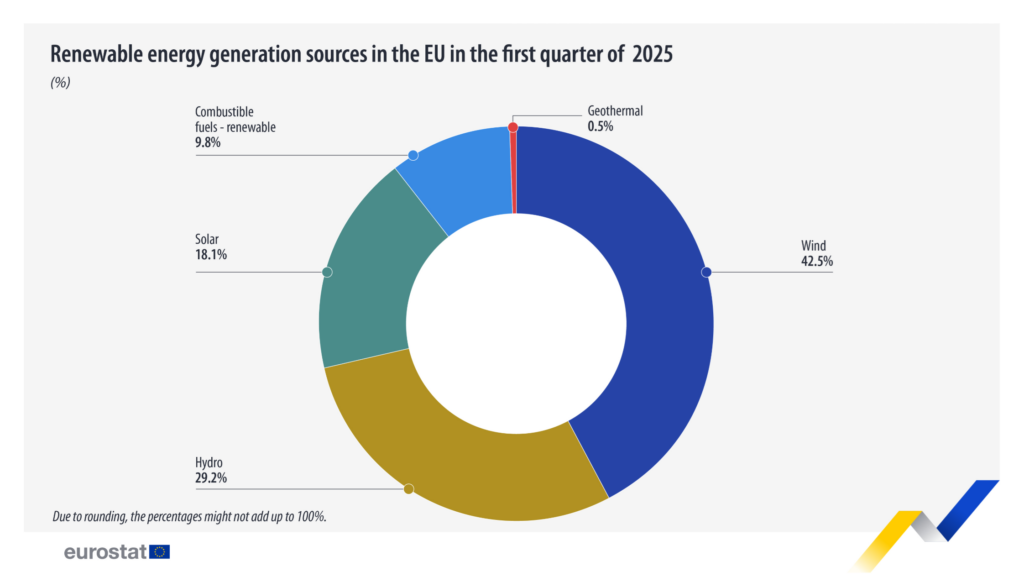Following on from our ‘3 emerging tech fields that will dominate the 2030s’, we look at four more tech fields that are potentially poised for mass adoption during the next decade.
Biotechnology & Personalised Medicine
Breakthroughs in genomics, AI, and large-scale health data is transforming medicine from a one-size-fits-all approach to treatments that can be tailored precisely to each individual’s biology. And over the next decade, Personalised Medicine (PM) is expected to make a significant contribution to healthcare by tailoring the right preventive or therapeutic strategy to the right person at the right time.
The European Partnership for Personalised Medicine (EP PerMed) is a key driver in helping to improve health outcomes within sustainable healthcare systems through better integration of research, development, innovation and implementation of PM for the benefit of patients, citizens, and society. This involves not just research achievements and only advancement of novel technologies, it also involves new ways of working, adaption of frameworks and decisions for individuals, organisations, networks, policy and communities such as new ways of managing PM related and utilising data, and creates new opportunities for PM innovation as well as health and care and economic growth.
A key innovation powering this shift towards PM is the use of virtual, dynamic models of individual patients that simulate their unique biology. Clinicians use these ‘digital twins’ to test and optimise treatments before anything is prescribed, reducing trial-and-error and speeding up decision-making.
By the 2030s, it is envisaged that digital twins will become a standard part of clinical practice, making healthcare more predictive, preventative, and deeply personal.
Neurotechnology & Brain-Computer Interfaces (BICs)
By linking our minds directly to machines, BICs help replace or restore useful function to people disabled by neuromuscular disorders, and are already at work in the medical field helping stroke survivors regain lost function and people with paralysis to communicate.
But the future holds even bigger possibilities. Tech giants and startups are already racing to develop safe, user-friendly non-invasive BCIs which could fundamentally transform how we connect with machines, and, more importantly with each other. However, as these technologies mature over the next decade, the biggest challenges will centre around regulation, ethics and privacy.
The European Brain Council (EBC) is a network of key players in the “Brain Area”, with a membership encompassing scientific societies, patient organisations, professional societies and industry partners. As a non-profit organisation its main mission is to promote brain research with the ultimate goal of improving the lives of the millions of Europeans living with brain conditions, mental and neurological alike.
It stands as the platform to foster cooperation between its member organisations and other stakeholders, consistently promoting dialogue between scientists, industry and society, and emphasises the importance of continued interaction with the European Institutions to build strong European health policies, raising awareness and improving knowledge of the brain and the repercussions of neurological and mental health conditions on society as a whole.
Sustainable & Renewable Energy Solutions
While most of the electricity generated from renewable sources in the first quarter of 2025 came from wind (42.5%), hydro (29.2%) and solar (18.1%), Eurostat reported the EU’s share of electricity from renewables actually saw a net fall compared to Q1 2024.

However, if the EU is to achieve its goal to be climate-neutral by 2050, as part of the European Green Deal, the 2030s will be a critical decade for decarbonisation efforts.
But the future goes beyond installing wind turbines and solar panels, emerging solutions such as solid-state batteries for longer-lasting energy storage, green hydrogen as a clean fuel alternative, and advanced nuclear fusion projects aiming to unlock nearly limitless power, can help reshape energy systems. InnoEnergy is the world’s number one active energy investor, and since 2010 their portfolio companies have raised over €34 billion in investment to industrialise clean tech.
A combination of smart grids and AI-driven energy management will help shift the energy transition towards a cleaner, more resilient future.
Human Augmentation & Wearable Interfaces
From self-balancing exoskeletons to implantable sensors and AI-powered suits, human augmentation is rapidly moving from theory to reality, enhancing both physical strength and cognitive capacity through wearable tech, and Precedence Research reported that the global human augmentation market size is predicted to reach around USD 1,390.01 billion by 2034.
The health impact of wearable interfaces is very promising. Spain’s ABLE Human Motion, supported by €2.8 million from EIT Health, received CE certification under EU medical-device rules for its hip-and-knee-powered exoskeleton, designed for spinal cord injury rehabilitation. Now entering clinical use in hospitals across Spain and Germany, it is opening doors for scalable, cost-effective recovery solutions. While an EIB-backed investment of €15 million, helped Augsburg-based German Bionic scale up its AI-powered back-support exoskeletons. These smart suits lighten the load on workers by reducing back strain and lowering injury risk, critical for logistics, healthcare, and manufacturing sectors.
But it is not just in the health sector where human augmentation innovation is happening. The Augmented Capability for HIgh end soLdiErs (ACHILE) programme that is developing innovative solutions for next-generation dismounted soldier systems in Europe was awarded a €40 million grant by the European Commission, as part of the Europe Defence Fund.
And for consumers, as wearable smart sensors and AR interfaces, such as those found in smart glasses, contact lenses, and skin patches, grow smaller, smarter, and more intuitive, they will blur the boundary between body and machine, raising new questions about privacy, identity, and equitable access.
By the 2030s, Europe’s ecosystem of public investment, industrial innovation, and rigorous regulation is positioning it at the forefront of human augmentation, transforming what it means to be human in a wearable, empowered era.
